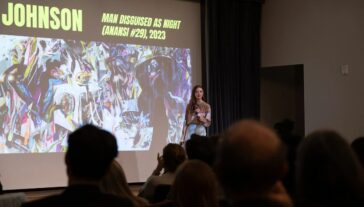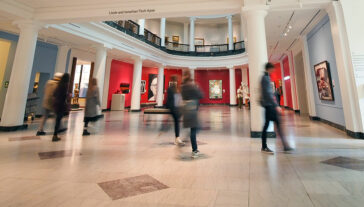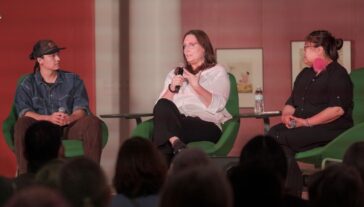Art, Money, and Meaning: UMMA’s Subject Matters Events Unpack the Business of Art
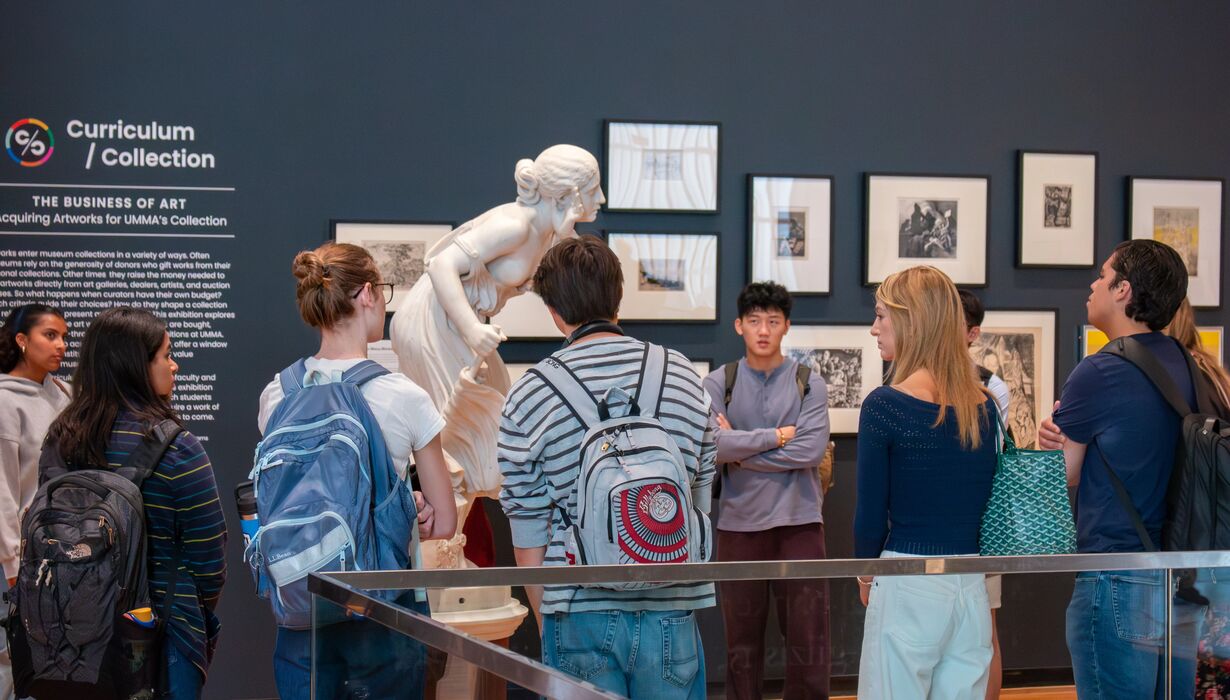
This Fall, UMMA has teamed up with the Ross School of Business to ask one of the most complicated questions in the art world: What actually gives art value?
The question will be explored in multiple ways over the course of the semester:
- A collaborative course at Ross taught by UMMA’s Curator of Art in Public Spaces Jennifer Carty and Ross Professor Thomas Buchmueller about the art market and how museums acquire art;
- An exhibition at UMMA called Curriculum / Collection: The Business of Art that explores the history of UMMA’s collection growth; and,
- A series of public events in UMMA’s Subject Matters series that takes visitors on a deep dive into complex, hairy questions about the value of art.
What actually gives art value? Is it the price tag, the story behind it, or the way it makes us stop and think? Dave Choberka, Mellon Foundation Curator for University Learning and Programs, explored those questions in the first session of Subject Matters earlier this fall, titled “Buying Art?! In this economy?!”
For Choberka it all comes down to one key idea: “What makes something valuable is not always the same as what makes it expensive. There are many things that go into the creation of value — idea, context, audience — not just the price.”
As part of the discussion, Choberka often turns to Jean-Michel Basquiat’s Thousands of Dollars in UMMA’s collection. At first glance, the piece looks like a quick sketch — almost childlike — made with something as simple as crayon on paper. For Choberka, that’s the point: “It’s almost making a joke about itself. Like, how much value does it have? Does it have value because of its a cool idea, playing with the value of art? Does it have value because it’s by Basquiat? It’s kind of the two things together.”
Choberka draws a line from that work back to Marcel Duchamp’s provocations like Fountain (1917) and his Art Medallions. For Duchamp, value itself was up for grabs. “He was playing a game with the art world,” Choberka explained. “He was questioning where the value of artwork comes from. Like, do you think it’s valuable just because it’s by me?”
At UMMA, questions of value aren’t theoretical — they shape what the Museum collects. Choberka points to two acquisitions that changed UMMA’s direction. The first was when the Museum acquired its first original artwork in 1862, Randolph Rogers’ Nydia, the Blind Flower Girl of Pompeii. Until then, UMMA had only collected plaster casts of famous works from ancient Greece and Rome and the Renaissance, which supported classical education.
“Nydia is kind of a cool bridge in that regard,” Choberka said. “It’s connected to classical education because it’s very much a classical sculpture, done in that style. But the depiction of Nydia is actually riffing on a popular 19th-century novel about the destruction of Pompeii. So it was classical, but also connected to what was then contemporary culture.” Rogers, though based in Italy at the height of his career, was born and raised in Ann Arbor — adding a layer of hometown pride to this first major acquisition.
More than a century later, the acquisition of Titus Kaphar’s Flay (James Madison) marked another turning point. “With Kaphar’s work, value isn’t about beauty in a traditional sense. It’s about forcing us to look differently at figures of power.” That acquisition, he adds, “sparked a chain reaction and pushed the Museum to collect more contemporary art that speaks to culture and politics in ways that are relevant to learning across campus.”
And sometimes value comes from the unexpected. Choberka recounts a story from the 1960s, when Andy Warhol visited Ann Arbor. “A curator at the time went out, bought a can of soup, and had Warhol sign it,” he says. “So yes, UMMA has a signed can of actual soup in our collection. Value takes many forms.”
In the end, Choberka returns to the big picture: “The real value of art is that it makes us stop, think, and see the world differently. It gives us new eyes. That’s something money can’t measure.”
Want to keep exploring down this rabbit hole? Join us at a Subject Matters event this fall, where Choberka and special guests will take this conversation further. Upcoming events are listed below.
The real value of art is that it makes us stop, think, and see the world differently. It gives us new eyes. That’s something money can’t measure.
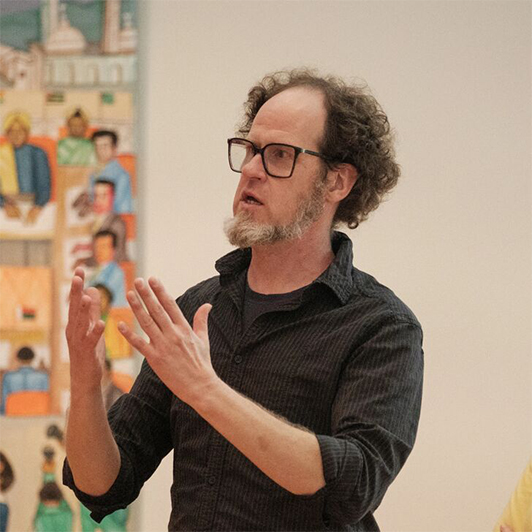

Subject Matters
Subject Matters is the coolest S in the museum. Each 90-minute session is part mind-expanding conversation, part social adventure. UMMA Curator Dave Choberka teams up with a U-M professor or other special guest to unravel surprising questions sparked by the art in UMMA’s galleries
More fro UMMA
